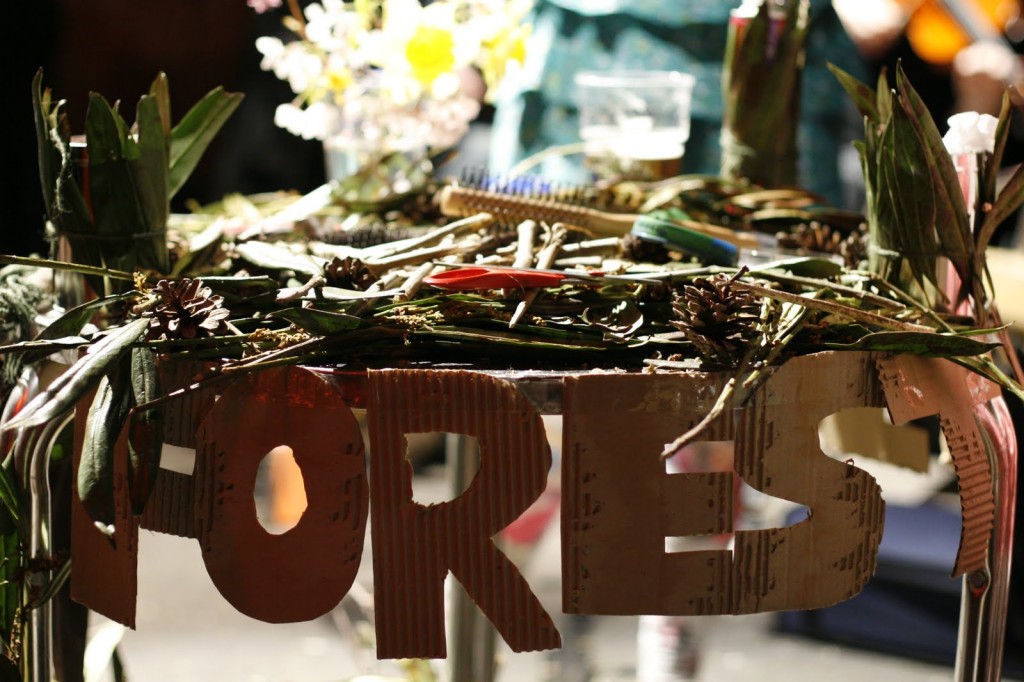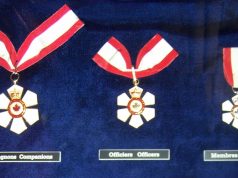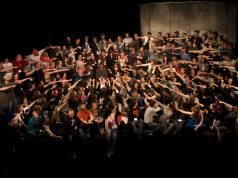On the opening day of this year’s Forest Fringe, our annual free performance venue at the Edinburgh Fringe Festival, I posted a somewhat ill-advised Facebook status. I looked at the blinking empty text box following the blue font that said Deborah Pearson, and I typed, “is getting too old for this.”
What followed were many Likes, a pep-talk style comment from my husband complete with a link to the film Rocky Balboa, and a comment from my mom who, like all moms before her, did not like to hear her daughter complain about feeling old. But even as I’m relatively young, the Edinburgh festival model I first built independently eight years ago and then collaboratively after 2008, often feels like it was designed by a 24 year old. A 24 year old takes a certain level of energy for granted. I can remember not being able to imagine how it would feel to be in my thirties, except in the abstract.
Now that I am in my thirties, and feel that way, I also feel different in the Forest Fringe skin I have donned annually for eight years. I am still on board with the ethos of a free venue in the midst of the most commercial theatre festival in the world. I still recognize that the beauty of what we do is tied up in the generosity of spirit it requires from artists and ourselves to keep going. But when you work as long and tiring as the hours we work over the festival, and you’re not being paid, you will need to have a relatively clear reason of why you’re doing something like that for the eighth year in a row.
Let me be clear about something first and foremost, because when you make art and work for free, and programme other artists to make art and work for free, it’s easy to level an accusation at your venue – you don’t pay artists, you don’t believe that art has value. Setting aside or simply accepting that notions of value and exchange are firmly grounded in a capitalist rhetoric, I want to be clear that I believe in paying artists for their work, and Forest Fringe also believes in paying artists for their work. We run a free venue at the Edinburgh Fringe festival, a festival that usually charges artists to put on shows, and that frequently acts as a platform for artists to establish a burgeoning career, to make creative and professional contacts, and/or to secure future paid bookings for their show. Very few artists come away from Edinburgh in August having made a profit, and the majority of artists make a loss which is occasionally significant.
This highly commercial atmosphere was proving prohibitive to providing a home for more experimental work – work that was made for small audiences, durational work or very short work – and it was also prohibitive to providing opportunities for a younger generation of experimental artists who did not have the money to invest in an expensive fringe run for their piece. In 2007 I devised a model that was further developed with Andy Field in our second year, which would offer artists a space at which to show their work, while providing them with accommodation, and showing work for free to build a spirit of risk and generosity in our audiences. I would say that the majority of the artists who work with us do so because, as one journalist whose name I can’t remember right now once said regarding the press and buzz that the festival creates, “A month for a theatremaker in Edinburgh is the equivalent to a year in their career otherwise.” The opportunity we provide may seem like a counterpoint to the commercial framework of the Edinburgh festival, but it often, in the long term, pays off for artists.
But perhaps a bigger question is, what’s it in for us? When we were 24 it gave us an opportunity to establish and identify with a community of young artists who were then collectively noticed by programmers. As artists we all now enjoy some degree of independent recognition in our fields. We have also all worked professionally, in a paid capacity, as curators at this point, so CV building is no longer a concern. Of course there’s only one reason we could possibly still be doing it, and that reason has something to do with Christmas.
Hear me out.
When I realized it was something to do with Christmas, I was sat across a table from the young, bright, bespectacled face of a young woman who couldn’t be more than 23 years old, and I had just said a word I’m fond of lately without being 100% sure I’m using it correctly; “neoliberalism.” It was the fourth day of Forest Fringe at the Edinburgh Fringe Festival, and I was talking to arguably one of the youngest, most quietly productive, energetic and enthusiastic people in the building. Although these days a lot of artists seem to be young, quietly productive, energetic and enthusiastic, especially as we get further from the young whipper-snapper upstarts that our reputation demands.
The young artist I was talking to is Edinburgh based, and she, along with her collaborator, had come to our venue with a project called “Imaginary Festivals” (acronymed “IF”), for which they produce a programme of imaginary theatre performances, and throughout the festival write a broadsheet every two days of real reviews for imaginary shows, garnered from interviews they’ve conducted with curious audience members at a table in our foyer. It is ambitious, demanding and full to the brim with energy and ideas – exactly the kind of thing I worked on when I was in my twenties, eager to make some good art. The reviews (written quickly and off the cuff) were all uncannily good and insightful.
The young artist and I sat at her table, trying to think up of an imaginary show, when we began talking about audiences, which led to collectivity, which led to capitalism, and suddenly I felt extremely aware of her youth and of my own dwindling energy on this twelve hour work day. And that’s when I mentioned something my brother once told me about Christmas. He works as a financial analyst, and I remember about ten years ago, he explained that the longer he spent celebrating Christmas, the more it became, by the rules of economic exchange, a losing proposition.
While in the first years of his life he would make our parents a card in return for a series of lavish toys and presents that his childhood self could never have acquired on his own, as an adult he spent money on his parents (and sibling) and received in return, relatively small or at least reasonable presents, many of which he never would have bought by himself. After having his children, the dream of any net gain on Christmas was lost completely – they were now in the advantageous position of all gains (Santa Clause included) that he had been in as a child. And yet, he told me then, he still enjoyed Christmas, but he enjoyed it differently – there was an affective value to the feeling of giving rather than receiving. A Gift Economy, or let’s face it, “the joy of giving” is a slightly trite and possibly problematic justification for a 31 year old working for free for their organization for the eighth year in a row, but you’ll have to excuse me, it’s after midnight and I’m sitting in a badly lit temporary office after having worked 14 hours today.
Trite feels Right, and my brother’s description of Christmas is an apt analogy for how it feels to continue running Forest Fringe at the Edinburgh Festival. Sitting across from a bright young artist in her early twenties, looking into the eyes of someone who is in a position so similar to the position I was in when I first started Forest Fringe, and knowing all the reasons I started it now that no longer apply to me now apply to her, I realized that the experience of running a free experimental arts venue at the Edinburgh Festival for little to no pay is replete with net loss. But sometimes it feels good in a way that nothing you get from capitalism ever can. So fuck it. There’s just a week left of this thing and maybe somebody will programme that imaginary festival, and in ten years time she can sit across from an imaginary artist and tell them about imaginary Christmas. Or maybe I’m just overworked and it’s half one in the morning. Eitherway it feels kind of weirdly good.










